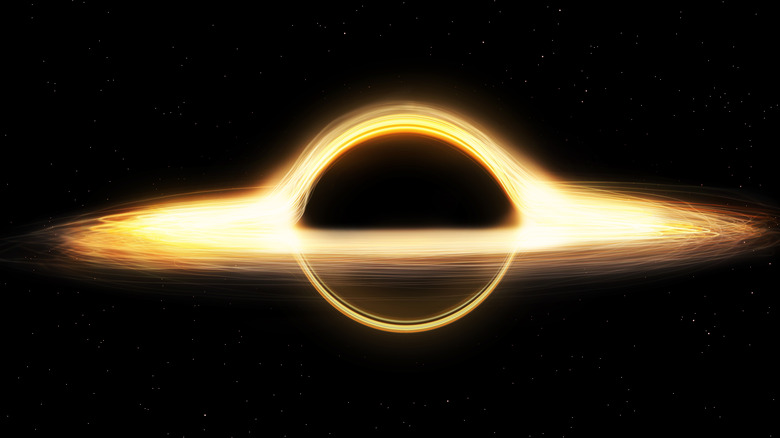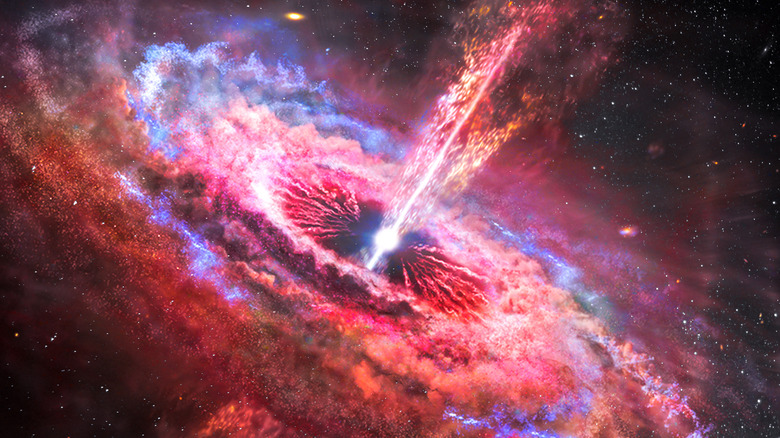Scientists Revealed Two Black Holes Just Combined Into One
Humanity's understanding of black holes is continuing to merge with new information. On April 11, Physical Review Letters published a study on an event wherein two black holes collided together and created a "kick" with a recoil velocity reaching 5000 kilometers per second, zooming the newly formed singularity away from its original merging location like a slingshot. As Science News noted, that's 5 million kilometers per hour, which is quite a bit faster than the approximately 15,700 mph speed at which space junk travels in low Earth orbit.
According to Britannica, black holes are best described as an inescapable body of gravity in space; they tend to give off strong gravitational forces at such velocities that, once in a black hole's grip, one would need to travel at the speed of light (about 186,000 miles per second) in order to escape from it. The researchers behind this new study noted that the recent merging event between two black holes, now called GW200129, has "important implications" for our understanding of gravitational physics and the broader origin of black holes.
What the black hole merger can teach us
The first signs of event GW200129, which also marks the first time scientists were able to register a "large" recoil action between two black holes, were detected all the way back in January 2020, according to Science News. The initial readings were picked up by gravitational-wave research centers LIGO and Virgo, which are equipped to study distant black holes by observing and analyzing gravitational waves that reach Earth.
Since then, researchers have determined that such collisions can provide clues with regard to how black holes interact with other objects in space. For example, the research team calculated a 0.5% probability that the newfound black hole would settle in a regular star cluster. In contrast, it calculated a 7.7% probability that it would find its eventual landing point inside of a nuclear star cluster, which can be best described as a section of space close to the center of a galaxy that is extremely dense, containing a large number of stars, according to NASA.
These understandings can lead to better computer modeling and a clearer conceptualization of how larger black holes form over time, especially in the center of the galaxy, where supermassive black holes are thought to be a common occurrence. At least two supermassive black holes exist near the galactic core, according to Astronomy, and one of them is the galactic core itself.

